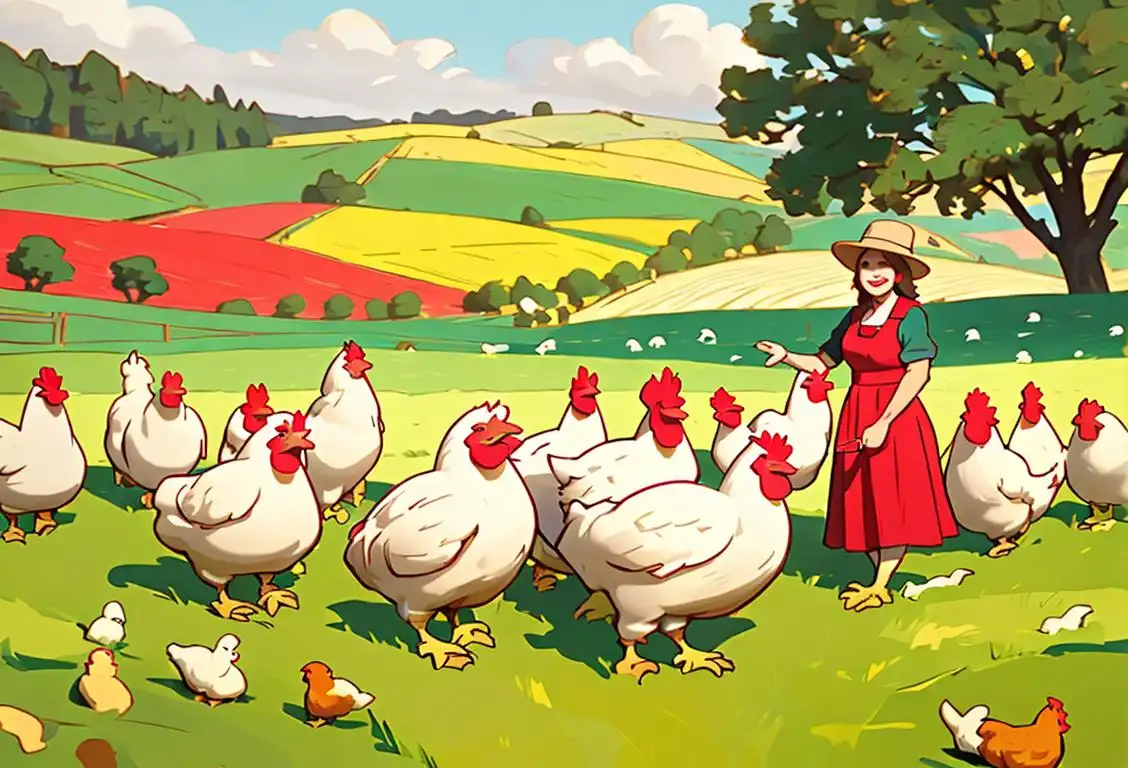National Tapioca Day

Hello there, tapioca enthusiasts! Get ready to celebrate National Tapioca Day, a delightfully quirky holiday dedicated to the joy of these tiny pearls of deliciousness. Whether you enjoy tapioca in bubble tea, puddings, or other tasty treats, this day is all about indulging in the unique texture and sweet flavor of this beloved ingredient.
When is Tapioca Day?
It's national tapioca day on the 28th June.
The Origins of National Tapioca Day
Every food has its day in the spotlight, and tapioca is certainly no exception. This gelatinous delight is made from the starchy root of the cassava plant. It has been enjoyed in various cultures around the world for centuries, but its exact origins have been lost in the annals of time. However, we do know that tapioca's popularity soared during the 1980s, thanks to the rise of bubble tea—a drink that combines tapioca pearls with tea and other flavorful ingredients.
Fast forward to the age of the internet, and dedicated tapioca aficionados decided to bring awareness to this unique delicacy by designating June 28th as National Tapioca Day. Since then, people have been celebrating the day by devouring tapioca-based delights and sharing their love for this peculiarly satisfying food on social media.
How to Celebrate National Tapioca Day
Now that you've marked your calendar for the big day, let's explore some fun ways to celebrate National Tapioca Day:
- Try a New Tapioca Recipe: Expand your tapioca horizons by experimenting with different recipes. From classic tapioca pudding to trendy bubble tea, there are countless ways to enjoy this chewy delight.
- Visit a Bubble Tea Shop: If you haven't tasted the wonders of bubble tea, National Tapioca Day is the perfect opportunity to visit a local bubble tea shop. Treat yourself to a refreshing drink with chewy tapioca pearls—you won't be disappointed!
- Share Your Tapioca Love on Social Media: Join the virtual celebration by sharing your favorite tapioca creations on social media. Use the hashtag #NationalTapiocaDay to connect with fellow tapioca enthusiasts around the world.
The Delightful World of Tapioca Trivia
Did you know that tapioca pearls are often used as a thickening agent in soups and sauces? These tiny globules have an amazing ability to absorb liquids and create a delightful texture. So, the next time you're enjoying a smooth and creamy soup, keep in mind that tapioca might be the secret behind its velvety consistency.
History behind the term 'Tapioca'
1498
First Encounter
In 1498, Portuguese explorer Vasco da Gama arrived in India, opening up trade routes between Portugal and the East. It was during this time that the Portuguese encountered a starchy, protein-rich food substance known as tapioca, derived from the cassava root plant.
1700s
Introduction to Manioc
In the 1700s, European explorers encountered the Manioc plant, also known as cassava, in South America. Manioc was a staple food for indigenous people and was an important part of their diets due to its rich nutritional content and versatility.
Late 18th Century
Manihot Esculenta
During the late 18th century, Swedish botanist Carl Linnaeus classified the Manioc plant as Manihot esculenta. Linnaeus recognized its economic potential and the plant's ability to produce a starchy substance that could be utilized in various culinary applications.
1590
Introduction to Europe
By the late 16th century, tapioca had made its way to Europe as a result of the Portuguese colonization of Brazil. Portuguese traders brought cassava roots, from which tapioca is derived, back to Europe, where it quickly gained popularity as a versatile food ingredient.
Mid-19th Century
The Term 'Tapioca' Emerges
In the mid-19th century, the term 'tapioca' started to gain prominence as a way to refer to the starch extracted from the Manioc plant. The name 'tapioca' is derived from the Tupi word 'tipi' which means 'residue' or 'sediment'. This name accurately described the way the starch was prepared by separating it from the fibrous material of the plant.
1840
Tapioca Pudding Emerges
In the 19th century, tapioca gained significant popularity in the United States and England as a dessert ingredient. Tapioca pearls, made from processed cassava starch, became the main component of tapioca pudding. This dessert gradually became a staple in many households, loved for its smooth and creamy texture.
1850s
Global Expansion of Tapioca
As European colonial powers expanded in the 1850s, tapioca became an important food source for European settlers and slaves in various parts of the world. It was particularly adopted in Southeast Asia, Africa, and the Caribbean where it replaced traditional staple foods in many regions.
1890
Industrialization of Tapioca Production
With the advent of industrialization, tapioca production became more streamlined. Improved manufacturing processes allowed tapioca to be produced on a larger scale, making it more accessible to the general population. This increased availability led to further popularity and incorporation of tapioca in various culinary preparations.
20th Century
Tapioca's Popularity in Puddings and Bubble Tea
During the 20th century, tapioca gained popularity in desserts and beverages. Tapioca pudding, a creamy dessert made with tapioca pearls, became a beloved treat in many countries. In recent years, tapioca pearls have also been used in bubble tea, a popular Taiwanese drink characterized by its chewy texture and variety of flavors.
20th Century
Tapioca in Global Cuisine
Throughout the 20th century, tapioca continued to spread across various cuisines and cultures, becoming a beloved ingredient in dishes like bubble tea, tapioca pudding, boba drinks, and more. Its versatility and unique texture made it a favorite among food enthusiasts around the world.
Present Day
Tapioca's Enduring Popularity
Today, tapioca remains a popular ingredient worldwide, enjoyed in a wide range of dishes and beverages. From sweet to savory, tapioca adds a distinct texture and flavor profile that appeals to many. It has become a staple in both traditional and modern cuisine, serving as a reminder of its fascinating history and cultural significance.
Did you know?
Did you know that tapioca pearls are often used as a thickening agent in soups and sauces?Tagged
nsfw food funFirst identified
28th June 2015Most mentioned on
28th June 2016Total mentions
643Other days
Chocolate Mousse Day
Something On A Stick Day
Children Day
Awareness Day
Frappe Day
Taco And Vodka Day
Happiness Day
Opposite Day
One Day
Poultry Day









